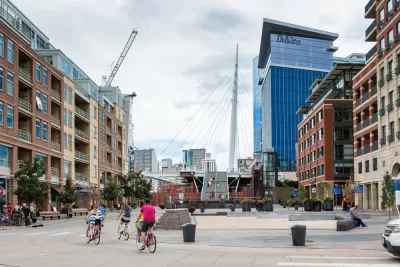Let's discuss how community planning could be fundamentally reorganized to improve both efficiency and placemaking.

"The placemaking movement has incorporated key urbanism principles into policy and practice," writes James Tischler. "This shift has transformed practice by recognizing the vital importance of development regulations and demonstrating that form-based codes can be used to assure that desirable change occurs. Recognition of local or regional 'place' outcomes, and how to achieve them with form-based codes, has moved into the planning/design mainstream."
The post goes on to list the current challenges "in achieving consistently good and predictable outcomes." Here are a few examples, as quoted from the article:
Time—public master plans take a long time to create and are often seen as shelf items and zoning ordinances are often not updated until several years after the plan is prepared or updated;
Money— many, if not most, municipalities do not have the necessary financial resources to prepare a high quality master plan and zoning ordinance, let alone one that focuses on form and character elements previously ignored. Existing staff may have little knowledge, experience, or interest in tackling such a task; Staff, time, and personnel resources are inadequate;
Public involvement—depending on one’s role, there seems to be either too many public meetings, or not enough opportunity for public input, or both and because the time frame is so long, the public gets "worn out" long before adoption and when implementation begins.
FULL STORY: The benefits of form-based planning and coding

Manufactured Crisis: Losing the Nation’s Largest Source of Unsubsidized Affordable Housing
Manufactured housing communities have long been an affordable housing option for millions of people living in the U.S., but that affordability is disappearing rapidly. How did we get here?

Americans May Be Stuck — But Why?
Americans are moving a lot less than they once did, and that is a problem. While Yoni Applebaum, in his highly-publicized article Stuck, gets the reasons badly wrong, it's still important to ask: why are we moving so much less than before?

Research Shows More Roads = More Driving
A national study shows, once again, that increasing road supply induces additional vehicle travel, particularly over the long run.

Judge Halts Enforcement of Anti-Homeless Laws in Grants Pass
The Oregon city will be barred from enforcing two ordinances that prosecute unhoused residents until it increases capacity and accessibility at designated camping sites.

Advancing Sustainability in Los Angeles County Schools
The Los Angeles County Office of Education’s Green Schools Symposium brings together educators, students, and experts to advance sustainability in schools through innovative design, climate resilience strategies, and collaborative learning.

Using Old Oil and Gas Wells for Green Energy Storage
Penn State researchers have found that repurposing abandoned oil and gas wells for geothermal-assisted compressed-air energy storage can boost efficiency, reduce environmental risks, and support clean energy and job transitions.
Urban Design for Planners 1: Software Tools
This six-course series explores essential urban design concepts using open source software and equips planners with the tools they need to participate fully in the urban design process.
Planning for Universal Design
Learn the tools for implementing Universal Design in planning regulations.
City of Moreno Valley
Institute for Housing and Urban Development Studies (IHS)
City of Grandview
Harvard GSD Executive Education
NYU Wagner Graduate School of Public Service
City of Cambridge, Maryland
Newport County Development Council: Connect Greater Newport





























